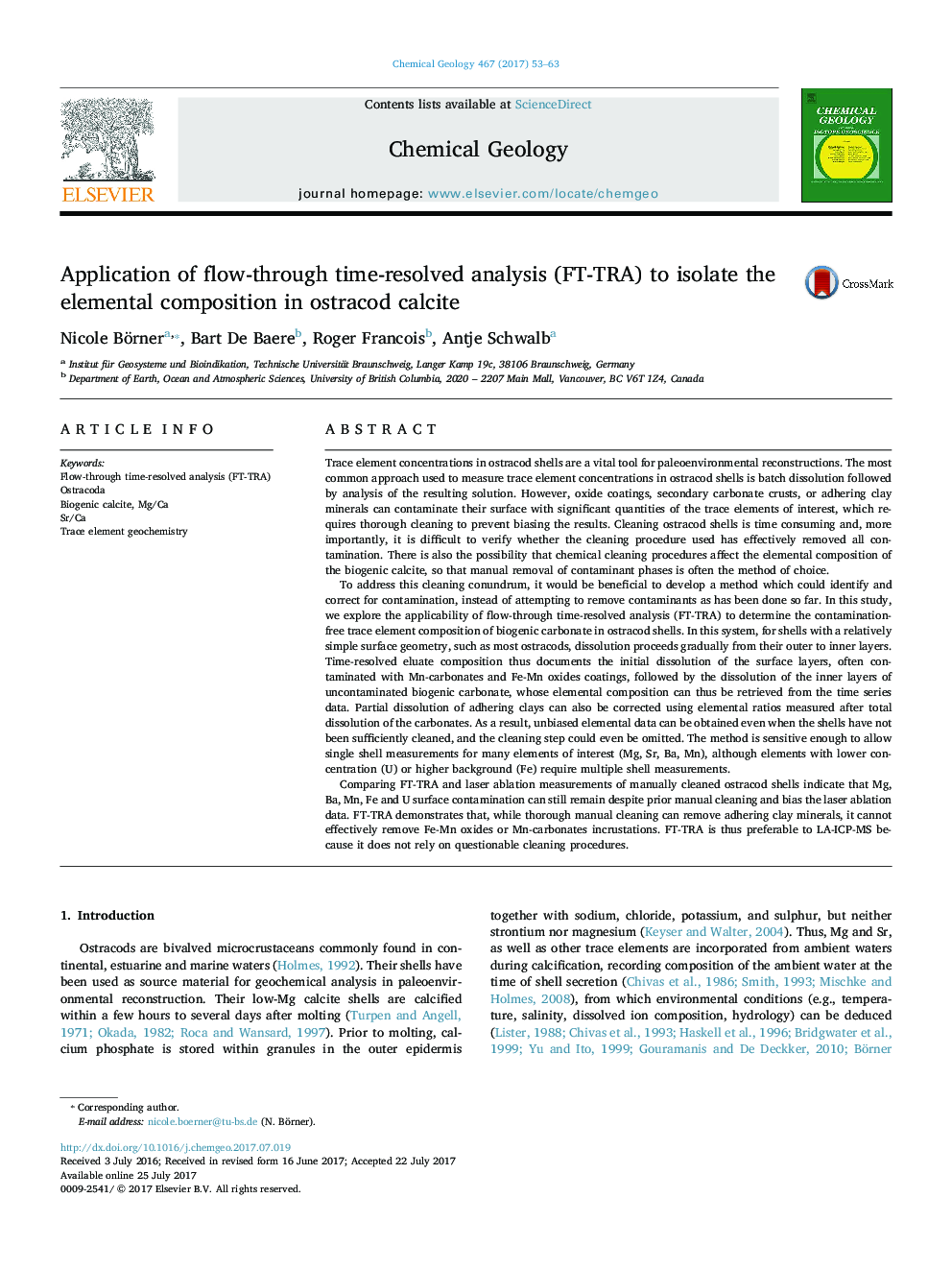| کد مقاله | کد نشریه | سال انتشار | مقاله انگلیسی | نسخه تمام متن |
|---|---|---|---|---|
| 5782679 | 1637507 | 2017 | 11 صفحه PDF | دانلود رایگان |

- FT-TRA allows geochemical analysis of single ostracod shells without prior cleaning.
- FT-TRA isolates the contamination free elemental composition of ostracod shells.
- Fe-Mn oxides, carbonate phases, clay particles are identified and corrected.
- Geochemical heterogeneity in ostracod shells can be documented.
Trace element concentrations in ostracod shells are a vital tool for paleoenvironmental reconstructions. The most common approach used to measure trace element concentrations in ostracod shells is batch dissolution followed by analysis of the resulting solution. However, oxide coatings, secondary carbonate crusts, or adhering clay minerals can contaminate their surface with significant quantities of the trace elements of interest, which requires thorough cleaning to prevent biasing the results. Cleaning ostracod shells is time consuming and, more importantly, it is difficult to verify whether the cleaning procedure used has effectively removed all contamination. There is also the possibility that chemical cleaning procedures affect the elemental composition of the biogenic calcite, so that manual removal of contaminant phases is often the method of choice.To address this cleaning conundrum, it would be beneficial to develop a method which could identify and correct for contamination, instead of attempting to remove contaminants as has been done so far. In this study, we explore the applicability of flow-through time-resolved analysis (FT-TRA) to determine the contamination-free trace element composition of biogenic carbonate in ostracod shells. In this system, for shells with a relatively simple surface geometry, such as most ostracods, dissolution proceeds gradually from their outer to inner layers. Time-resolved eluate composition thus documents the initial dissolution of the surface layers, often contaminated with Mn-carbonates and Fe-Mn oxides coatings, followed by the dissolution of the inner layers of uncontaminated biogenic carbonate, whose elemental composition can thus be retrieved from the time series data. Partial dissolution of adhering clays can also be corrected using elemental ratios measured after total dissolution of the carbonates. As a result, unbiased elemental data can be obtained even when the shells have not been sufficiently cleaned, and the cleaning step could even be omitted. The method is sensitive enough to allow single shell measurements for many elements of interest (Mg, Sr, Ba, Mn), although elements with lower concentration (U) or higher background (Fe) require multiple shell measurements.Comparing FT-TRA and laser ablation measurements of manually cleaned ostracod shells indicate that Mg, Ba, Mn, Fe and U surface contamination can still remain despite prior manual cleaning and bias the laser ablation data. FT-TRA demonstrates that, while thorough manual cleaning can remove adhering clay minerals, it cannot effectively remove Fe-Mn oxides or Mn-carbonates incrustations. FT-TRA is thus preferable to LA-ICP-MS because it does not rely on questionable cleaning procedures.
Journal: Chemical Geology - Volume 467, 20 September 2017, Pages 53-63